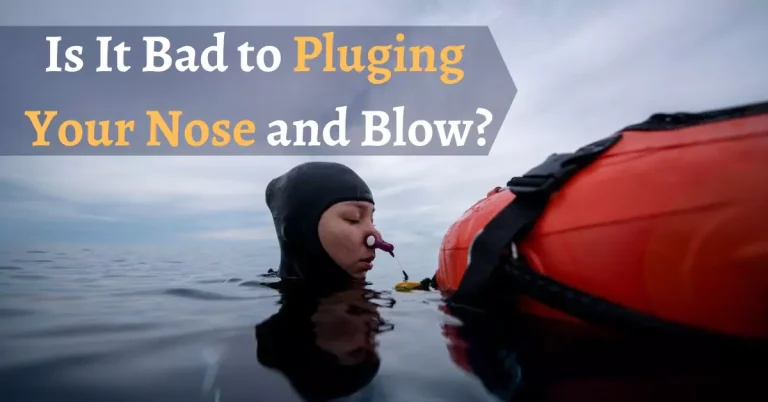Full Face Snorkel Mask Dangers I Complete Details in 2024
Full Face Snorkel Mask Dangers
Do you consider full-face snorkeling masks worth buying? Know the pros and cons of using a full face snorkel mask and the reasons of full face snorkel mask dangers.
Full-face snorkel masks are essential for exploring oceans. But even with the best equipment, there are always safety risks when snorkeling. Your mask can protect you from dangerous creatures and debris, but there are always a few dangers to consider when snorkeling. Check out our latest blog post to learn about full face snorkel mask dangers.
What exactly is a full-face snorkeling mask?
Snorkeling is a sport you need to be prepared for it. A full-face snorkeling mask is a type of diving gear designed to protect the user’s face from the water and other debris while snorkeling.
There has been recent full-face snorkel drowning deaths in Hawaii, and nobody has stated clearly that these deaths occurred due to wearing full-face snorkel masks.
We examined profoundly and concluded that the recent deaths are due to the individual, their fear, and other factors rather than the specific design of the mask itself.
Top 6 Reasons for Full Face Snorkel Mask Dangers
If you’re considering full-face snorkeling masks, read the possible risks and their reasons first. Full-face snorkeling masks can be dangerous if misused and lead to severe damage if you don’t properly maintain them.

- Freediving will be dangerous
A full-face snorkeling mask prevents you from accessing your nose, which inhibits you from equalizing the pressure that builds up in your ears while you free dive.
A significant amount of air in the mask also exerts considerable strain on your face during the descent. If you want to dive free to get a closer look at the reef and sea life, this type of mask is not the ideal choice for you.
While with the standard mask, you can relieve the pressure by breathing out through your nose, this is not feasible with the full-face one.
- CO2 buildup may be toxic
Humans emit carbon dioxide (CO2) when they breathe in and out. Our bodies require extra oxygen to keep our muscles functioning when we exercise, which causes our breathing to quicken. We also breathe more shallowly at the same time, which is problematic.
CO2 levels in exhaled air are higher than in inhaled air. We won’t be able to exhale fully to push all the toxic air out if we do this while wearing a full-face snorkel mask. It’s comparable to breathing inside a sealed bag where the CO2 accumulates until it becomes hazardous.
Inhaling used air that is high in CO2 causes headaches, vertigo, and even coma. Suffocation is one of the reasons for full face snorkel mask dangers.
Not good
- Fogging up
We tested to give you a perfect guideline. For a full-face snorkeling mask, you should ensure the breathing portion is as close to your face as possible and fits neatly over your nose.
Only the breathing portion of the full-face snorkeling mask should fog up when you wear it and breathe through it. Any fog should not be there when looking. The gazing part fogging up is a warning flag and might be dangerous, so you must take some precautionary measures.
- Mask design
The head straps on full-face snorkeling masks are more constrictive, making it more challenging to take them off in an emergency. Imagine you attempt to remove the mask when water enters it (some masks have design flaws), but you cannot do so because the straps are too tight.
You can’t take the water-filled mask off because you’re stuck in it.
That’s dangerous, coupled with carbon dioxide accumulation. It results in a hazardous situation. Furthermore, it is impossible to remove the mask when it is flooding.
When wearing full face masks, some people have complained that their face area gets hot and they feel claustrophobic. It’s not good.
- Choosing low-quality products
Choosing low-quality and cheap snorkeling masks could be life-threatening. The low-quality snorkel float becomes trapped in the tube, shutting off airflow. Masks can leak if not improperly fit, and snorkel components break when connecting or separating. These problems result from using low-quality materials.
Masks will also be highly uncomfortable and leak if the silicone is of poor quality and lacks the flexibility required to provide a proper seal. Always choose superior quality snorkel masks.
We highly urge you not to risk your life by using full-face snorkeling masks, especially the low-quality masks that should be knockoffs.
- Check Whether a Mask is Secure
Verify the one-way breathing system on the mask. There is a one-way valve in the snorkel and the orinasal mask part; see if the orinasal mask forms a tight seal on your face. If the results are positive, it is likely safe to use the mask.
Several manufacturers test their products using the current snorkel, gas mask, and full-face diving mask standards to ensure you can use their mask safely. Trying these particular masks, however, does not imply that all full-face snorkeling masks are equal, even ones that appear to be the same.
Other Risks Associated With Full-Face Snorkel Mask?
Many people are unaware of the risks associated with their use.
- Some full-face snorkeling masks do not work as advertised, and in some cases, they may increase the risk to snorkelers.
- Some potential side effects of using a full-face mask include feeling dizzy or lightheaded after swimming, feeling intense heat on your skin after getting wet, or feeling an extreme sense of smell while snorkeling with a full-face mask.
- Beginners are more prone to panic or hyperventilating underwater water due to anxiety. Read our guide on how to choose snorkel gear for beginners so you can avoid full face snorkel dangers.
Safety Measures to Avoid Full Face Snorkel Mask Dangers
There are many safety concerns with snorkeling, and beginning snorkelers may be more likely to ignore these issues. Divers should be aware of potential full face snorkel mask dangers.
- Properly Put Your Mask
To put on your full-face snorkel mask, follow these steps:
- Find a spot where you can extend your arms completely out from your sides without feeling restrictions or fear of losing your grip on the mask.
- Position yourself, so your chin is gently hanging off the top edge of the mask (this will help keep water from entering your mouth).
- Align both eyes with the pupil hole in the front of the mask and ensure that all lenses are clear.
- Place one hand over your heart and use forceps or tongs to secure two straps around each shoulder using a hard knot, about 1 inch from skin level (if wearing goggles or eyewear).
- Twist these straps tightly around your upper chest. Hence, they form a loop (found at the back of the neck area), then slowly open both nostrils wide by pinching each nostril closed between the thumb and first two fingers; finally, close both nostrils by pushing up on them together (use Your left hand while still holding onto the mask with right hand). If wearing goggles or eyewear, twist them clockwise until they’re turned off.
After properly putting your full-face snorkeling mask, go for swimming in a straight line towards the nearest coral reef. Without stopping to breathe, swim for about 5-6 meters and then dive down into the water below.
Be careful when swimming near coral reefs, as they can be dangerous. if you are experiencing difficulty breathing, call 911 immediately!

- Additional Considerations
- Beginners and not in good physical shape should wear snorkel belts or vests during snorkeling. Such flotation devices enhance buoyancy and enable snorkelers to float, making it much easier to clean and reinstall masks in the ocean.
- You should also consult your doctor before any snorkeling activities if you have any medical conditions that could worsen under the influence of sunscreen or a full face mask.
- Check the weather/water conditions before snorkeling, and listen to your body; if you are not feeling well, don’t go snorkeling.
- Don’t snorkel alone.
Frequently Asked Questions
The Final Statement
Full-face snorkel masks are becoming increasingly popular, and the question of full face snorkel mask dangers is still not up for debate. We’ve put together some risk factors and preventive measures for using a full-face snorkeling mask in this blog post,
Despite Full face snorkel mask dangers, you can have some great benefits. Snorkeling is a safe and easy way of discovering our oceans. Snorkel with a full-face snorkeling mask, enjoying the experience while keeping your safety a top priority.






